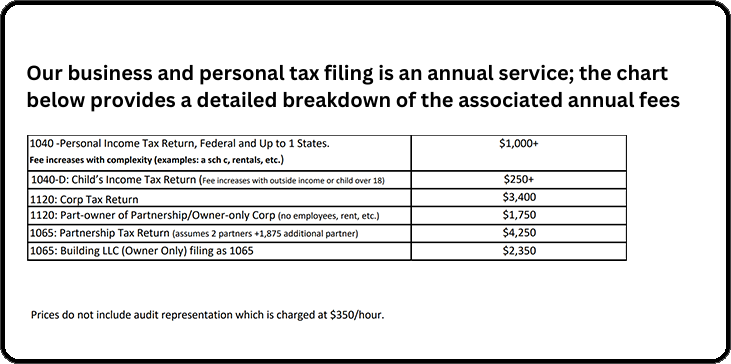Tune in to our podcast series: The Dental Board Room
Listen Now

Dental practice owners are no strangers to high income—and equally high taxes. Many dentists work long hours to provide for their families, but too often, they allow the IRS to take more than its fair share. The result? Less money to put toward the things that matter most, like sending their kids to college debt-free.
Fortunately, the tax code has built-in strategies that allow dentists to reroute dollars away from the IRS and into their family’s future. One of the most powerful yet underutilized tools is the 529 education savings plan.
When combined with the payroll strategy of paying your children a reasonable wage, 529 plans can help you:
This blog will walk through exactly how dentists can unlock the hidden power of 529 plans—and how to use them alongside payroll dollars for maximum impact.
A 529 plan is a tax-advantaged savings account designed for education expenses. Each state offers its own version, but the rules are consistent across the country. Here’s what makes them special:
This flexibility makes them one of the most versatile tax tools available for families.
Dentists often face unique financial challenges:
A 529 plan addresses these issues head-on:
Instead of writing another big check to the IRS, you transform that same money into a college fund.
Every state runs its own 529 program, but here’s the good news—you don’t have to pick your home state’s plan unless there’s a tax benefit.
Option 1: Your State’s Plan
Option 2: Utah’s My529 Plan
Pro tip for dentists: Since you’re likely contributing larger amounts than the average family, the lower fees and better investment options of Utah’s plan can make a huge difference over 15–20 years of growth.
One of the biggest mistakes families make is opening the 529 in the child’s name. While this seems intuitive, it can actually hurt more than help.
Here’s why dentists should keep ownership:
By keeping the account in your own name, you ensure the funds stay flexible and under your guidance.
This is where the strategy really shines. By combining the kids-on-payroll approach with a 529 plan, you can effectively use IRS dollars to pay for college.
Here’s how it works step by step:
This isn’t just a one-year benefit. Repeated over 10–15 years, the strategy can fund college tuition, reduce your tax liability, and set your children up for a lifetime of financial success.
Let’s run the numbers:
Over 15 years, that dentist could:
This is the power of combining payroll with 529 plans—it takes money the IRS would otherwise claim and gives it back to your family, where it belongs.
Q: What if my child doesn’t go to college?
A: You can transfer the funds to another child, cousin, or even hold them for future grandchildren.
Q: What if we overfund the account?
A: Excess funds can now be rolled into a Roth IRA for the beneficiary (thanks to new rules), providing even more flexibility.
Q: Can I still access the funds if needed?
A: Yes, but withdrawals for non-qualified expenses are subject to taxes and penalties. That’s why it’s best to earmark the account for education.
As a dentist, you’re in a unique position to take advantage of this strategy. By paying your children through payroll and redirecting those dollars into a 529 plan, you:
This is the kind of proactive planning that separates dentists who just earn money from those who build lasting wealth for their families.
Want to hear exactly how 529 plans fit into a bigger tax-saving strategy for dentists?
Listen to Episode 129 of The Dental Boardroom Podcast: Money Well Spent (Part 2)
Wes knows what's best for dental practices. He's been doing this for a long time and he sees lots of practices. He can tell me how our practice is doing, and what we can do to increase our productivity. With past CPA's, there were no ideas. It was all coming from me, saying "I think I can do better, but I don't know how." I come in to meet with Wes and he says "You CAN do better, and I know how."
PracticeCFO is in hundreds of dental offices around the country. They know what numbers should look like. They know what percentages of payroll, rent and supplies should be, and they will hold you accountable to those numbers, which will really help you stick to your plan and your path of growth and savings. That is invaluable
Whenever something comes up, whether it's building or practice related and we weren't sure where the numbers would go, PracticeCFO has been instrumental in helping us figure that out. I can't say enough of how important that is - that it goes beyond that initial partnership. They make sure this business marriage works.
When I go home from work, I don't spend a whole lot of time stressing about what my books look like, or how much I owe in taxes. By using PracticeCFO, the burden of keeping track of a lot of the big financial numbers and metrics are taken off my plate.
PracticeCFO helped me develop a plan for the future. I have colleagues that work with other accountants that don't have a plan - they just look at the numbers of the practice and that's it. There's no plan for 10, 20 years from now. But with PracticeCFO, you get that. PracticeCFO makes you feel like you're they're only client.
(In reference to his practice sale) What could've been super stressful, wasn't! When picking John and Wes, it was from word of mouth recommendations and other people's experiences from the past that really did it for me. And it turns out that those recommendations were right on the line.
Wes knows the business side of dentistry. His comprehensive plan will organize your personal and professional finances so you can focus on taking care of patients. Massive ROI.
I can’t say enough good things about everyone at PracticeCFO. Everyone on the team is professional, organized, knowledgeable, helpful and kind. They also respond to emails and phone calls immediately and are always happy to help. They have helped me navigate year-to-year as a business owner. PracticeCFO gives me peace of mind that my business is in good hands.
I love Practice CFO! They have helped me obtain a practice and maintain a practice. They are incredible people who are on top of everything and make owning and running the business portion of a practice easy. They couldn’t be better for my business and my sanity. They have every detail of the business and taxes taken care of where all I have to do is show up and follow their easy steps to success!
Practice CFO has the best tools I’ve seen for personal tax and financial planning in addition to top-tier corporate tax and accounting services. I have been very pleased with the level of quality service. They manage my monthly bookkeeping and accounts payable. It is a great system and saves me a ton of time, and it allows us to have monthly financial statements within a week of month end.

This will close in 0 seconds